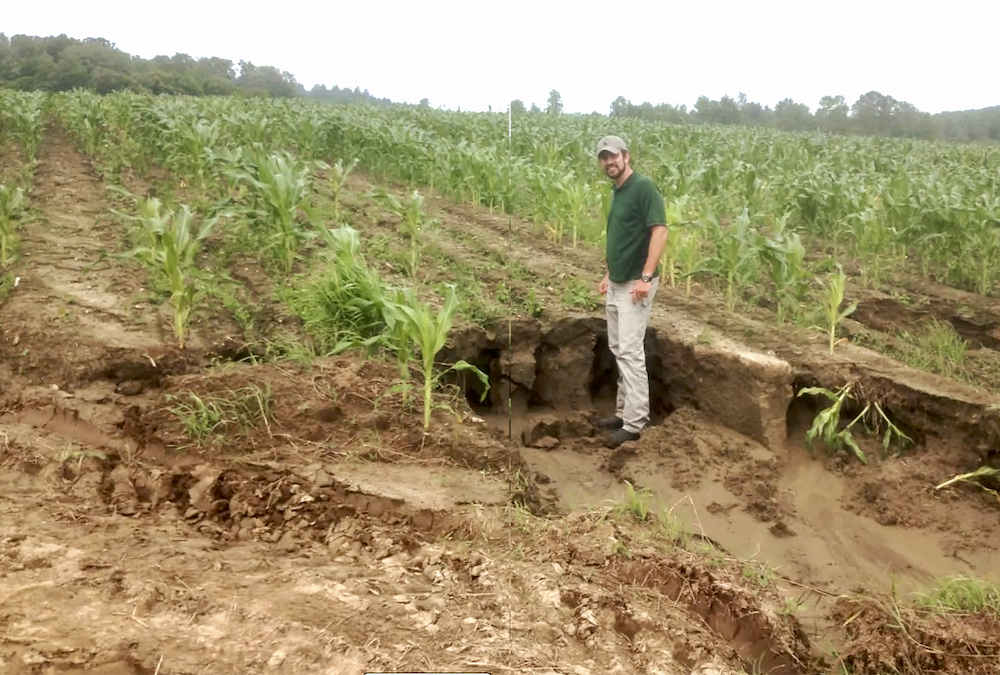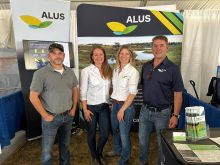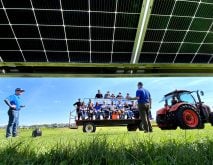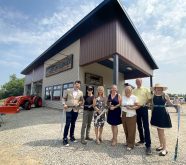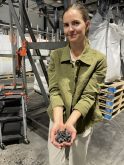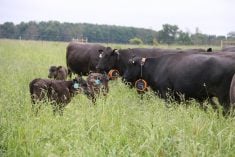Joshua Faulkner is a firm believer in the power of on-farm research to influence policymakers and agricultural practices.
As program co-ordinator for the University of Vermont Extension Center for Sustainable Agriculture Farming and Climate Change, he says multiple-scale monitoring, evaluation and modelling from paired watershed studies and small-scale plots could guide state and federal policy and programming officials to craft effective programs to assist farmers.
Why it matters: Heavier rainfall events are forcing farmers to figure out how to manage that water, and policy makers are concerned about the nutrients moving with that water.
Read Also
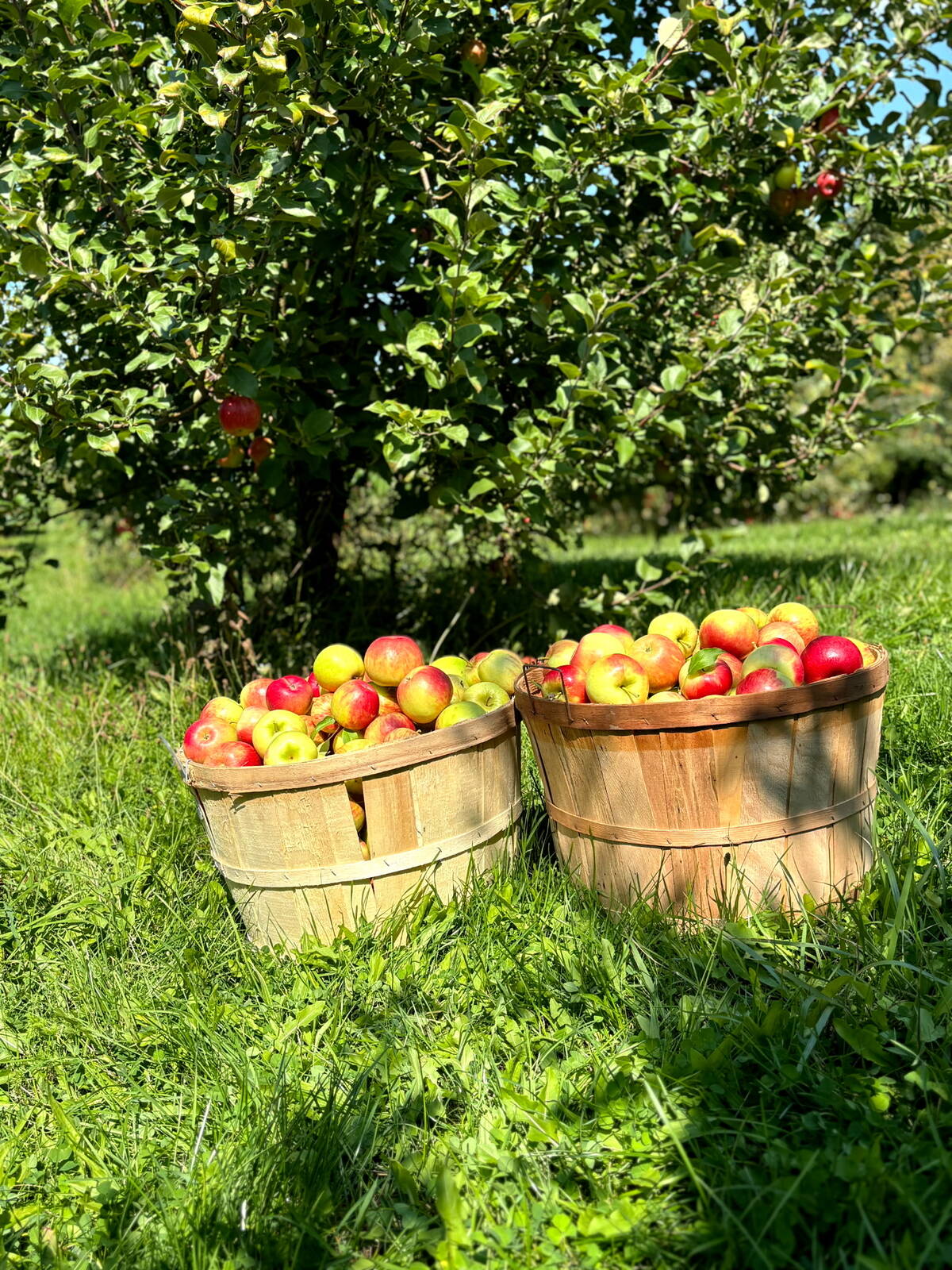
Farmers taking to social media to spread the word about the cost of farm thefts
A rash of farm thefts in Ontario have left farmers looking for new ways to help customers understand the cost of stealing goods.
“It takes a lot of time, and that’s something policymakers don’t always want to hear,” said Faulkner.
He thinks governments expect spring-funded programs to provide policy-shaping data following harvest or soon after. However, establishing baselines for research sometimes takes up to two years before treatments can begin.
“For these paired watershed studies, we’re looking at five years minimum to get good results,” he said.
Increased precipitation and a 74 per cent jump in heavy rainfall events over the last half-century are creating significant soil erosion issues and contributing to phosphorus runoff in the Lake Champlain Basin and the Northeast watershed, Faulkner said.
Precipitation in the northeastern U.S. has risen by four inches over the last century and Vermont has had a five- to nine-inch increase in 30 years, he told attendees at the Ontario Soil and Crop Improvement Association’s ONFARM forum.
“That is a big deal. Our farmers are really on their heels trying to understand and adapt to this, especially around soil management and some of the water quality implications,” he said.
Erosion generally increases at a rate of 1.7 times the annual rainfall increase, and Vermont farmers have seen devastating gully erosion from single-storm events.
In 2014, Faulkner documented a three-foot-deep gully near Burlington after an extreme weather event, something he’d only seen in a textbook depicting events during the dustbowl.
“This soil is a tragedy when it’s lost from the farm, but then it, of course, ends up in downstream receiving waters,” he said. Then phosphorous binds tightly to sediment.
Over the last four years, Faulkner’s studies include everything from a watershed initiative to studies on two-metre-square on-farm plots. He is looking for tools to hit the federal Environmental Protection Agency’s mandate for a 36 per cent reduction in lake phosphorus loading. Most of that has been attributed to agriculture.
A long-term evaluation of conservation watersheds, initiated with federal and state partners in 2019, is looking at soil, climate and farming systems to advance the water quality work in the Lake Champlain Basin.
Flow gauges were installed on 22,000-acre control and 15,000-acre treatment watersheds in one of the most intensive agricultural counties to sample base flow and storm samples for nutrients and sediment.
“We’re trying to understand, on a watershed scale, is there a relationship between broad soil health indicators and water quality at the watershed outlet?”
Faulkner added that researchers established the baseline this year and testing will repeat at years three and five.
Thirty-centimetre cores measuring farm-level carbon stocks were added to some fields this summer, garnering a lot of attention.
“That’s kind of a buzz everyone’s really excited to understand – how much carbon are we storing on our inner soils, and is that changing over time?” Faulkner said.
Vermont’s Discovery Farms Network, in collaboration with private farmers, is monitoring runoff from four large plots on a single farm, half of which is tiled.
The work should determine the effect of best management practices and the overall impact of tile drainage in conjunction with those BMPs on water quality.
At the field scale, researchers have installed approximately 20 stations to monitor tile drainage and surface runoff with runoff flume equipment housed in solar-powered sheds, said Faulkner.
Additionally, monitoring stations are equipped with heaters to capture nutrient export and loss from fields during winter snowmelt and rain events.
“This takes a lot of cooperation (from farmers),” he said. “It takes about two years for us to go through a calibration period before we can move into that treatment period and apply that BMP that we’re interested in understanding the effects of.”


